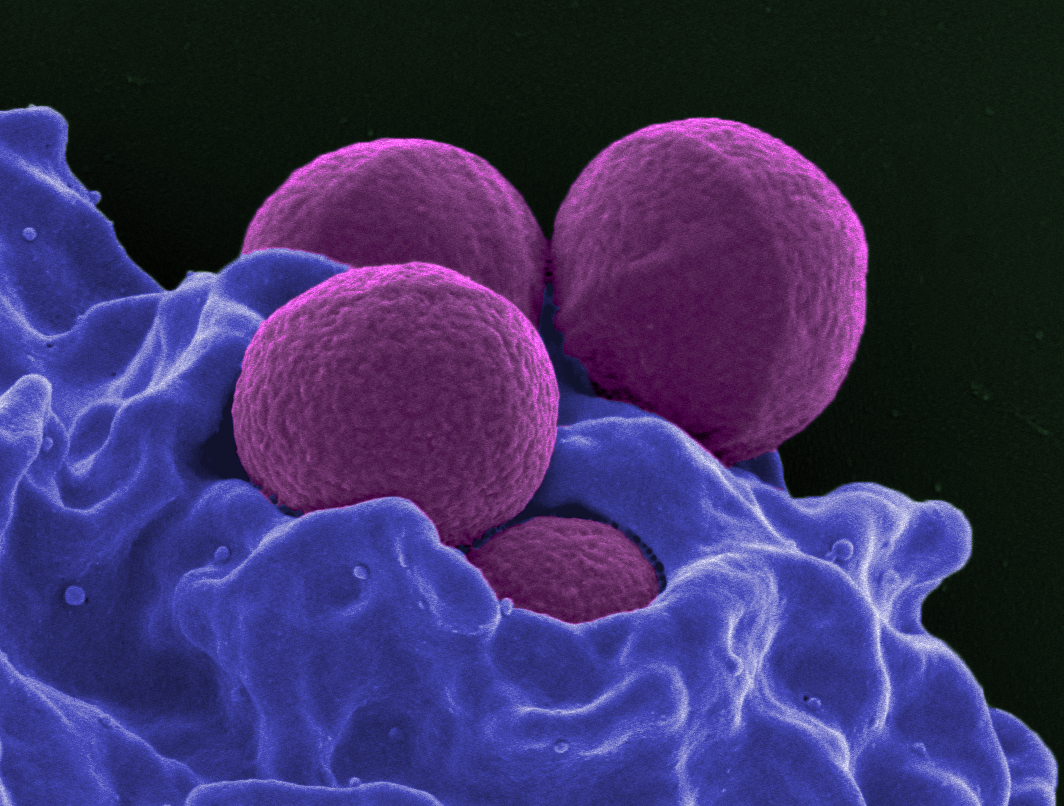|
Tenosynovitis
Tenosynovitis is the inflammation of the fluid-filled sheath (called the synovium) that surrounds a tendon, typically leading to joint pain, swelling, and stiffness. Tenosynovitis can be either infectious or noninfectious. Common clinical manifestations of noninfectious tenosynovitis include de Quervain tendinopathy and stenosing tenosynovitis (more commonly known as trigger finger). Signs and symptoms Infectious tenosynovitis in 2.5% to 9.4% of all hand infections. Kanavel's cardinal signs are used to diagnose infectious tenosynovitis. They are: tenderness to touch along the flexor aspect of the finger, fusiform enlargement of the affected finger, the finger being held in slight flexion at rest, and severe pain with passive extension. Fever may also be present, but is uncommon. Pathogenesis Infectious tenosynovitis is the infection of closed synovial sheaths in the flexor tendons of the fingers. It is usually caused by trauma, but bacteria can spread from other sites o ... [...More Info...] [...Related Items...] OR: [Wikipedia] [Google] [Baidu] |
De Quervain Syndrome
De Quervain syndrome occurs when two tendons that control movement of the thumb become constricted by their tendon sheath in the wrist. This results in pain and tenderness on the thumb side of the wrist. Radial abduction of the thumb is painful. On some occasions, there is uneven movement or triggering of the thumb with radial abduction. Symptoms can come on gradually or be noted suddenly. The diagnosis is generally based on symptoms and physical examination. Diagnosis is supported if pain increases when the wrist is bent inwards while a person is grabbing their thumb within a fist. Treatment for de Quervain tenosynovitis focuses on reducing inflammation, restoring movement in the thumb, and maintaining the range of motion of the wrist, thumb, and fingers. Symptomatic alleviation (palliative treatment) is provided mainly by splinting the thumb and wrist. Pain medications such as NSAIDs can also be considered. Steroid injections are commonly used, but are not proved to alt ... [...More Info...] [...Related Items...] OR: [Wikipedia] [Google] [Baidu] |
Trigger Finger
Trigger finger, also known as stenosing tenosynovitis, is a disorder characterized by catching or locking of the involved finger in full or near full flexion, typically with force. There may be tenderness in the palm of the hand near the last skin crease (distal palmar crease). The name "trigger finger" may refer to the motion of "catching" like a trigger on a gun. The ring finger and thumb are most commonly affected. The problem is generally idiopathic (no known cause). People with diabetes might be relatively prone to trigger finger. The pathophysiology is enlargement of the flexor tendon and the A1 pulley of the tendon sheath. While often referred to as a type of stenosing tenosynovitis (which implies inflammation) the pathology is mucoid degeneration. Mucoid degeneration is when fibrous tissue, such as tendon, has less organized collagen, more abundant extracellular matrix, and changes in the cells (fibrocytes) to act and look more like cartilage cells (chondroid metaplas ... [...More Info...] [...Related Items...] OR: [Wikipedia] [Google] [Baidu] |
Stenosing Tenosynovitis
Stenosis () is the abnormal narrowing of a blood vessel or other tubular organ or structure such as foramina and canals. It is also sometimes called a stricture (as in urethral stricture). ''Stricture'' as a term is usually used when narrowing is caused by contraction of smooth muscle (e.g. achalasia, prinzmetal angina); ''stenosis'' is usually used when narrowing is caused by lesion that reduces the space of lumen (e.g. atherosclerosis). The term coarctation is another synonym, but is commonly used only in the context of aortic coarctation. Restenosis is the recurrence of stenosis after a procedure. Examples Examples of vascular stenotic lesions include: * Intermittent claudication (peripheral artery stenosis) * Angina ( coronary artery stenosis) * Carotid artery stenosis which predispose to (strokes and transient ischaemic episodes) * Renal artery stenosis Types In heart valves The types of stenoses in heart valves are: * Pulmonary valve stenosis, which is the thickening ... [...More Info...] [...Related Items...] OR: [Wikipedia] [Google] [Baidu] |
Neisseria Gonorrhoeae
''Neisseria gonorrhoeae'', also known as ''gonococcus'' (singular) or ''gonococci'' (plural), is a species of Gram-negative diplococci bacteria first isolated by Albert Ludwig Sigesmund Neisser, Albert Neisser in 1879. An obligate human pathogen, it primarily colonizes the mucosal lining of the urogenital tract; however, it is also capable of adhering to the mucosa of the nose, pharynx, rectum, and conjunctiva. It causes the sexually transmitted infection, sexually transmitted genitourinary infection gonorrhea as well as other forms of gonococcal disease including disseminated gonococcemia, septic arthritis, and gonococcal ophthalmia neonatorum. ''N. gonorrhoeae'' is Oxidase test, oxidase positive and a microaerophile that is capable of surviving Phagocyte, phagocytosis and growing inside neutrophils. Microbiological culture, Culturing it requires carbon dioxide supplementation and enriched agar (chocolate agar) with various antibiotics (Thayer–Martin agar, Thayer–Martin). ... [...More Info...] [...Related Items...] OR: [Wikipedia] [Google] [Baidu] |
Mycobacterium Marinum
''Mycobacterium marinum'' is a slow growing fresh and saltwater mycobacterium (SGM) belonging to the genus ''Mycobacterium'' and the phylum Actinobacteria. It was formerly known as ''Mycobacterium balnei''. The strain marinum was first identified by Joseph D. Aronson in 1926 and it is observed as a pathogenic mycobacterium causing tuberculosis-like infections in fish (mycobacteriosis) and skin lesions in humans. The bacteria grows optimal at a temperature around 30 °C. Human infection :''See aquarium granuloma'' ''Mycobacterium marinum'' is an acid-fast, aerobic bacterium which can infect humans. Infection is usually associated either with swimming, preparing sea food, or with keeping or working with aquarium fish. Infections of humans are rare due to the chlorination of water. The bacteria penetrate the skin through trauma, usually from bites, injuries from fins, and penetration from foreign objects. The infection is not transmittable from person to person. The bacteria ... [...More Info...] [...Related Items...] OR: [Wikipedia] [Google] [Baidu] |
Remitting Seronegative Symmetrical Synovitis With Pitting Edema
A remittance is a non-commercial transfer of money by a foreign worker, a member of a diaspora community, or a citizen with familial ties abroad, for household income in their home country or homeland. Money sent home by migrants competes with international aid as one of the largest financial inflows to developing countries. Remittance is more than three times as large as the total global foreign aid. In 2021, $780 billion was sent to 800 million people, while foreign aid totalled $200 billion. Most remittance flows from high-income countries to lower-income countries. Workers' remittances are a significant part of international capital flows, especially with regard to labor-exporting countries. A substantial share of remittance ends up in the hands of banks and money-transfer companies due to fees imposed on money transfers. Governments can play a vital role in enabling migrants to support their families more effectively by implementing measures that help reduce transactio ... [...More Info...] [...Related Items...] OR: [Wikipedia] [Google] [Baidu] |
Synovitis
Synovitis is the medical term for inflammation of the synovial membrane. This membrane lines joints that possess cavities, known as synovial joints. The condition is usually painful, particularly when the joint is moved. The joint usually swells due to synovial fluid collection. Synovitis may occur in association with arthritis as well as lupus, gout, and other conditions. Synovitis is more commonly found in rheumatoid arthritis than in other forms of arthritis, and can thus serve as a distinguishing factor, although it is also present in many joints affected with osteoarthritis. In rheumatoid arthritis, the fibroblast-like synoviocytes, highly specialized mesenchymal cells found in the synovial membrane, play an active and prominent role in the synovitis. Long term occurrence of synovitis can result in degeneration of the joint. Signs and symptoms Synovitis causes joint tenderness or pain, swelling and hard lumps, called nodules. When associated with rheumatoid arthritis, sw ... [...More Info...] [...Related Items...] OR: [Wikipedia] [Google] [Baidu] |
Boutonniere Deformity
Boutonniere deformity is a deformed position of the fingers or toes, in which the joint nearest the knuckle (the proximal interphalangeal joint, or PIP) is permanently bent toward the palm while the farthest joint (the distal interphalangeal joint, or DIP) is bent back away ( PIP flexion with DIP hyperextension). Causes include injury, inflammatory conditions like rheumatoid arthritis, psoriatic arthritis, and genetic conditions like Ehlers-Danlos syndrome. Pathophysiology This flexion deformity of the proximal interphalangeal joint is due to interruption of the central slip of the extensor tendon such that the lateral slips separate and the head of the proximal phalanx pops through the gap like a finger through a button hole (thus the name, from French ''boutonnière'' "button hole"). The distal joint is subsequently drawn into hyperextension because the two peripheral slips of the extensor tendon are stretched by the head of the proximal phalanx (note that the two periphera ... [...More Info...] [...Related Items...] OR: [Wikipedia] [Google] [Baidu] |
Broad-spectrum Antibiotics
A broad-spectrum antibiotic is an antibiotic that acts on the two major bacterial groups, Gram-positive and Gram-negative, or any antibiotic that acts against a wide range of disease-causing bacteria. These medications are used when a bacterial infection is suspected but the group of bacteria is unknown (also called empiric therapy) or when infection with multiple groups of bacteria is suspected. This is in contrast to a narrow-spectrum antibiotic, which is effective against only a specific group of bacteria. Although powerful, broad-spectrum antibiotics pose specific risks, particularly the disruption of native, normal bacteria and the development of antimicrobial resistance. An example of a commonly used broad-spectrum antibiotic is ampicillin. Bacterial targets Antibiotics are often grouped by their ability to act on different bacterial groups. Although bacteria are biologically classified using taxonomy, disease-causing bacteria have historically been classified by their mic ... [...More Info...] [...Related Items...] OR: [Wikipedia] [Google] [Baidu] |
Microbiological Culture
A microbiological culture, or microbial culture, is a method of multiplying microorganism, microbial organisms by letting them reproduce in predetermined culture medium under controlled laboratory conditions. Microbial cultures are foundational and basic diagnostic methods used as research tools in molecular biology. The term ''culture'' can also refer to the microorganisms being grown. Microbial cultures are used to determine the type of organism, its abundance in the sample being tested, or both. It is one of the primary diagnostic methods of microbiology and used as a tool to determine the cause of infection, infectious disease by letting the agent multiply in a predetermined medium. For example, a throat culture is taken by scraping the lining of tissue in the back of the throat and blotting the sample into a medium to be able to screen for harmful microorganisms, such as ''Streptococcus pyogenes'', the causative agent of strep throat. Furthermore, the term culture is more ge ... [...More Info...] [...Related Items...] OR: [Wikipedia] [Google] [Baidu] |





